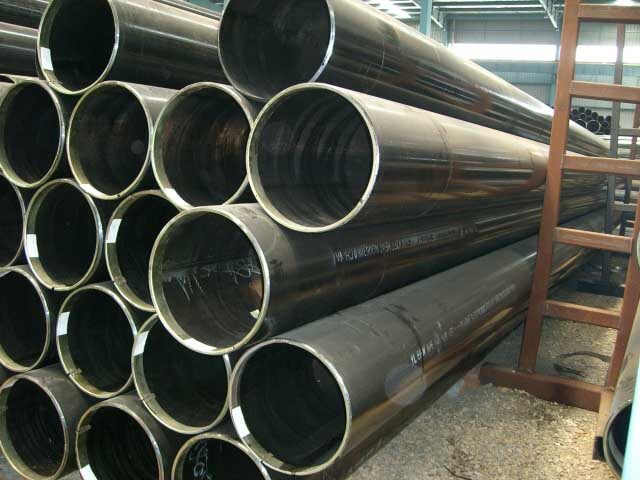-
Cangzhou Yulong Steel Co., Ltd.
-
Phone:
+86 13303177267 -
Email:
admin@ylsteelfittings.com
- English
- Arabic
- Italian
- Spanish
- Portuguese
- German
- kazakh
- Persian
- Greek
- French
- Russian
- Polish
- Thai
- Indonesian
- Vietnamese
- Zulu
- Korean
- Uzbek
- Hindi
- Serbian
- Malay
- Ukrainian
- Gujarati
- Haitian Creole
- hausa
- hawaiian
- Hebrew
- Miao
- Hungarian
- Icelandic
- igbo
- irish
- Japanese
- Javanese
- Kannada
- Khmer
- Rwandese
- Afrikaans
- Albanian
- Amharic
- Armenian
- Azerbaijani
- Basque
- Belarusian
- Bengali
- Bosnian
- Bulgarian
- Catalan
- Cebuano
- China
- China (Taiwan)
- Corsican
- Croatian
- Czech
- Danish
- Esperanto
- Estonian
- Finnish
- Frisian
- Galician
- Georgian
- Kurdish
- Kyrgyz
- Lao
- Latin
- Latvian
- Lithuanian
- Luxembourgish
- Macedonian
- Malgashi
- Malayalam
- Maltese
- Maori
- Marathi
- Mongolian
- Myanmar
- Nepali
- Norwegian
- Norwegian
- Occitan
- Pashto
- Dutch
- Punjabi
- Romanian
- Samoan
- Scottish Gaelic
- Sesotho
- Shona
- Sindhi
- Sinhala
- Slovak
- Slovenian
- Somali
- Sundanese
- Swahili
- Swedish
- Tagalog
- Tajik
- Tamil
- Tatar
- Telugu
- Turkish
- Turkmen
- Urdu
- Uighur
- Welsh
- Bantu
- Yiddish
- Yoruba

Set . 14, 2024 04:00 Back to list
40nb pipe bends
Understanding 40NB Pipe Bends A Guide
In various industries, especially in construction and manufacturing, piping systems play a crucial role in transporting fluids and gases. Among the essential components of these systems are pipe bends, which allow pipes to change direction. One common specification in this regard is the 40NB pipe bend. But what does 40NB mean, and why is it important?
What is 40NB?
The term NB stands for Nominal Bore, a measure used to describe the approximate internal diameter of a pipe. In this case, 40NB refers to a pipe with a nominal bore of 40 millimeters. This specification is critical because it determines not only the size of the pipe but also its pressure rating, flow capacity, and compatibility with fittings and other components.
Significance of Pipe Bends
Pipe bends are essential in the layout of piping systems. They allow for changes in direction without the need for multiple fittings, which can lead to increased friction losses and a more complex installation process. Bends can be manufactured in various angles, commonly 45 degrees or 90 degrees, depending on the system's requirements. Using bends helps maintain smooth fluid flow, reducing turbulence and potential damage to the system.
Types of Pipe Bends
There are several types of bends that can be used for 40NB pipes, including
1. Long Radius Bends These have a radius that is typically four times the nominal diameter of the pipe. They are designed for applications where a smooth flow is crucial, and are used extensively in drainage and waste systems.
40nb pipe bends

2. Short Radius Bends These bends have a radius that is equal to one times the nominal diameter of the pipe. They are used in applications where space is limited, though they can create more turbulence in the flow.
3. Elbows While technically a type of bend, elbows are specific fittings that are either short or long radius and are used to change the direction of flow.
Material and Manufacturing
40NB pipe bends can be made from various materials, including carbon steel, stainless steel, and plastic, depending on the intended application. The manufacturing process can involve bending the pipe using specialized machines or prefabricating the bends using molds. It's essential that the bends meet the required specifications and standards, as they must withstand the pressure and conditions of the system they are part of.
Applications
The applications of 40NB pipe bends are vast. They are commonly found in plumbing and heating systems, oil and gas pipelines, water treatment facilities, and industrial processes. Ensuring that the correct type of bend is used in the right application is crucial for system reliability and efficiency.
Conclusion
Understanding the function and specifications of 40NB pipe bends is vital for anyone involved in piping system design or installation. These components not only facilitate the necessary directional changes in piping layouts but also play a significant role in maintaining flow efficiency and system integrity. By selecting the appropriate materials and types of bends, engineers and technicians can ensure that their piping systems operate smoothly and reliably, ultimately leading to improved performance and longevity of the infrastructure they maintain.
By adhering to industry standards and best practices, the use of 40NB pipe bends can contribute substantially to the success of numerous projects across various sectors, from construction to energy production.
Latest news
-
ANSI 150P SS304 SO FLANGE
NewsFeb.14,2025
-
ASTM A333GR6 STEEL PIPE
NewsJan.20,2025
-
ANSI B16.5 WELDING NECK FLANGE
NewsJan.15,2026
-
ANSI B16.5 SLIP-ON FLANGE
NewsApr.19,2024
-
SABS 1123 FLANGE
NewsJan.15,2025
-
DIN86044 PLATE FLANGE
NewsApr.19,2024
-
DIN2527 BLIND FLANGE
NewsApr.12,2024
-
JIS B2311 Butt-Welding Fittings LR/SR 45°/90° /180°Seamless/Weld
NewsApr.23,2024











